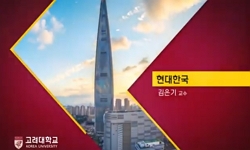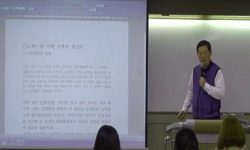『Yugeumorok(遊金鰲錄)』a collection of poems of Kim Si Seup(金時習)`s trip shows ups and downs of worldly affairs. What life did Kim Si Seup live in Yongjang Temple, Geumo Mountain, Gyeongju? He freed himself from Seoul swarming with disloya...
http://chineseinput.net/에서 pinyin(병음)방식으로 중국어를 변환할 수 있습니다.
변환된 중국어를 복사하여 사용하시면 됩니다.
- 中文 을 입력하시려면 zhongwen을 입력하시고 space를누르시면됩니다.
- 北京 을 입력하시려면 beijing을 입력하시고 space를 누르시면 됩니다.
https://www.riss.kr/link?id=A87025414
- 저자
- 발행기관
- 학술지명
- 권호사항
-
발행연도
2011
-
작성언어
-
-
주제어
김시습 ; 경주기행 ; 문학창작의 현장 ; 방외인 ; 사유록 ; 유금오록 ; 불교문화 ; 유교문화 ; 생태문화 ; Kim Si Seup ; Gyeongju trip ; Literary creation ; Sayourok ; Yugeumorok ; Buddhist culture ; Confucianism culture ; ecology culture
-
KDC
700
-
자료형태
학술저널
-
수록면
99-126(28쪽)
- 제공처
-
0
상세조회 -
0
다운로드
부가정보
다국어 초록 (Multilingual Abstract)
『Yugeumorok(遊金鰲錄)』a collection of poems of Kim Si Seup(金時習)`s trip shows ups and downs of worldly affairs. What life did Kim Si Seup live in Yongjang Temple, Geumo Mountain, Gyeongju? He freed himself from Seoul swarming with disloyal subjects and explored the culture of Silla finding out where he had come from. Especially he got stability of mind and body interacting with an official of Gyeongjubu, Kim Jin Sa and monks. The spot of Kim Si Seup`s trip and literary creation is a shortcut to dynamically understand his life as an outsider and his inner consciousness. He realized the transience of life and the emptiness of wealth and prosperity through the ruins of the brilliant Silla culture on his trip of Buddhist culture. His poems of ecology culture trip express scholar`s integrity and consciousness of life through Bamboo trees, pine trees and Japanese apricot trees. His poems of Confucianism culture trip reflect the awareness of his ancestors. Yongjang Temple in the skirt of Geumo Mt. is a home disconnected with the world. A barley field of Seonbang Temple neglected in the ruins symbolizes life force which has overcome harsh winter. Kim Si Seup criticized transmigrationism and unrealistic Buddhism in Heungryun Temple and Sacheonwang Temple but he wrote <Mujaengbi> in memory of a monk, Won Hyo.
동일학술지(권/호) 다른 논문
-
무대매체 및 영상매체의 도입과 한국 근대소설 형성의 상관성 연구
- 시학과 언어학회
- 곽상순 ( Sang Soon Guahk )
- 2011
-
- 시학과 언어학회
- 김란희 ( Ran Hee Kim )
- 2011
-
발견되는 성, 전시되는 성 -식민지 근대와 섹슈얼리티의 접속-
- 시학과 언어학회
- 김양선 ( Yang Sun Kim )
- 2011
-
- 시학과 언어학회
- 김인균 ( In Kyun Kim )
- 2011




 KISS
KISS






